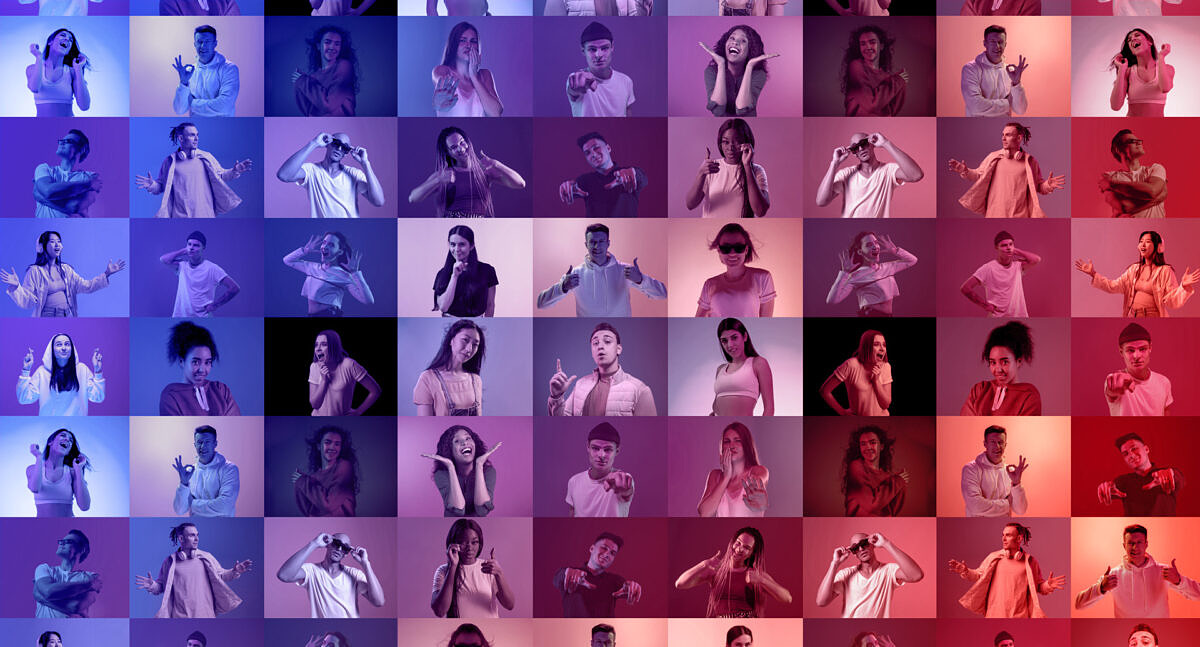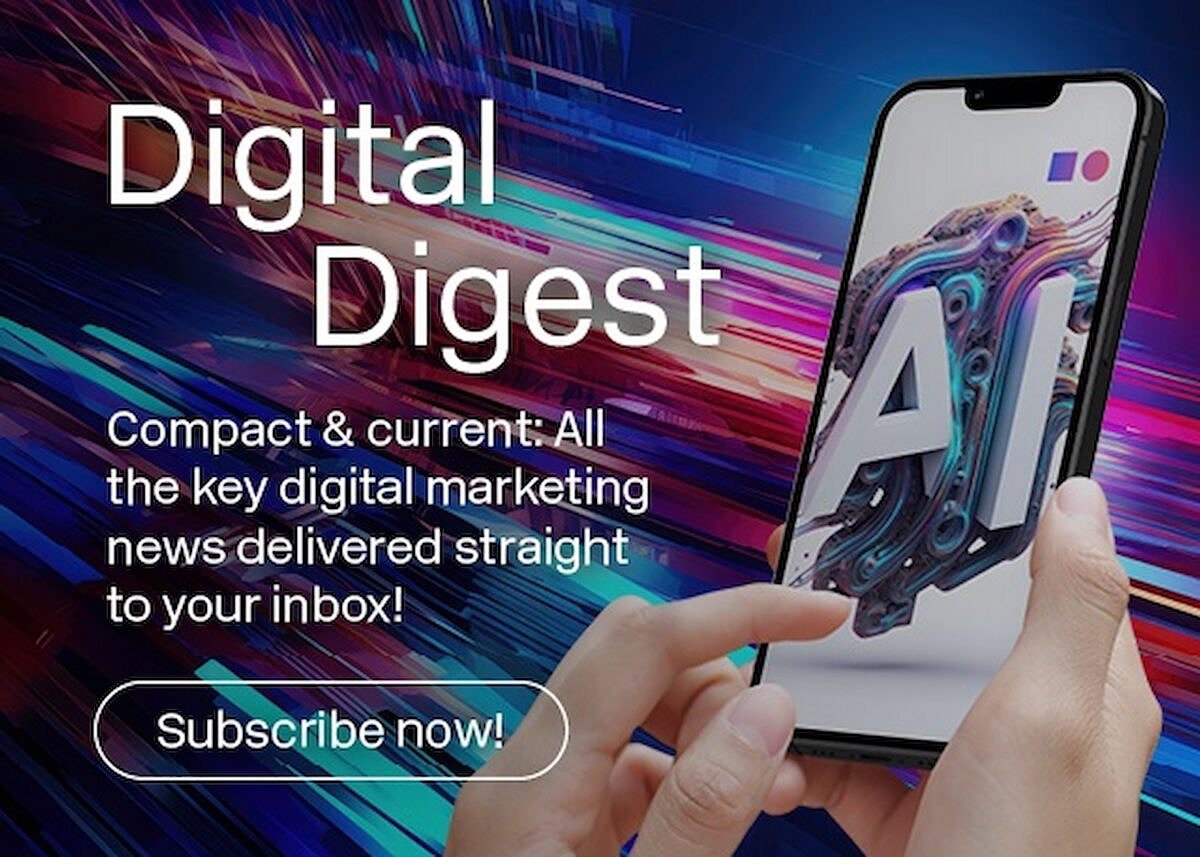Diversity, equity, and inclusion: Is the ad industry a trailblazer?
DEI stands for diversity, equity, and inclusion – three terms that should shape the marketing world, both internally and externally. But what’s really happening with equal opportunities? And what’s being done to move things forward?

A question of money – is there a gender pay gap in marketing?
The gender pay gap expresses the difference in earnings between employees of different genders. In many industries, it clearly shows that we have still not reached parity in 2024, but what does the situation look like in the marketing industry? The answer is unusually good, according to the 2024 salary check conducted by kununu, an online platform for rating employers. The survey investigated a number of areas, including the gender pay gap among career newcomers in a range of industries. What was the result? While the gender pay gap is 24% in the financial industry and 13% in the advising and consulting sector, for example, the figure for marketing, advertising, and PR is comparatively small at 6%, which is a good sign. On the other hand, it is still an indicator of inequality.
6 percent
The gender pay gap in the advertising industry
From gender to skin color, age, and much more: The fight against discrimination goes on.
We may all know it, but it still bears repeating that discrimination is not restricted to gender. People are also discriminated against because of their ethnic origin and nationality, religion, and sexual orientation. The fact that employees also suffer age-based discrimination is frequently overlooked. A study conducted by Xing in May 2024 showed unequivocally that 34% of people aged 50-67 report that they have already experienced discrimination because of their age. As a result, this age group is hit particularly hard by the stigmatization, with examples including being assigned duties that are below their skill level, having to accept restrictions to their range of responsibilities, and being refused access to further training opportunities.
34 percent
of people aged 50-67 experience age discrimination.
A lack of diversity, equity, and inclusion in companies is associated with deficiencies in external communication, which in turn casts brands in a poor light, particularly in ads aimed at customers or employees from the younger generation. Individual engagement will do little to change this; what is actually needed is networks that advocate effectively for equality – such as the DEI initiative from the German Association for the Digital Economy (BVDW).
Fair play in the digital economy: How the BVDW’s DEI initiative intends to tackle discrimination
The industry association BVDW will increasingly be putting DEI issues in the spotlight in the future, with the aim of turning the digital economy into a role model and a driver for change. We put some questions to BVDW vice presidents Anke Herbener and Corinna Hohenleitner:
What can the industry expect from the BVDW’s DEI initiative?
“We believe that there is still much work to be done to strengthen DEI both in society and across the economy as a whole. We feel that the digital economy should act as a positive role model, which is why the BVDW both wants to and is required to play its part in creating a fairer and more equal and equitable world.
In terms of specific actions, we are working in a number of areas. We are taking a clear position by communicating our goals and basic principles on DEI both internally and externally. In addition, we want to encourage our member companies to promote the issue within their own ranks and to put it in the spotlight. We are also aiming for an appropriate balance of membership in our committees, on the Board, and at events.
Another important task for the BVDW is to give our member companies and their employees a platform where they can network and share knowledge and ideas – including for DEI issues. Our ‘Women in Programmatic’ network is a good example of this; every event is sold out and feeds off the mutual dialogue and sharing among participants. It’s about sharing experiences and learning, but also about networking within the group.
We also want to raise awareness and visibility, and to highlight trailblazers in our industry. Providing a platform for a diverse variety of careers and personalities encourages people and creates a feeling of belonging.”
How will DEI influence and shape digital marketing?
“Pride Month is a good example of the extent to which issues like diversity have already become part of companies’ digital marketing strategies. Brands use a variety of strategies, including digital ones, to raise awareness of the community’s needs – ranging from logos using rainbow colors and collaborations with queer influencers through to Pride campaign collections.
There’s no denying that the conscious integration of DEI has positively influenced many areas in digital marketing. If you understand and appreciate how diverse our society truly is, then you can also align marketing messages more closely with the different requirements of your target groups. This in turn affects brand image: companies that support and advocate for diversity and inclusion tend to be perceived more positively.”
But it is important to understand that DEI is much more than just a trending topic on positioning.
“Authentic and sincere commitment on the issue is crucial, and customers are increasingly demanding this and becoming more aware when it comes to pinkwashing.
One positive practical example is a case that won gold at this year’s German Digital Award in the ‘Digital for Good’ category. The ‘I Am A Mountain’ campaign by prosthetics manufacturer Ottobock shows the reality of living with physical disabilities and the obstacles that people have to overcome. The empowering marketing message also raises awareness and visibility for inclusive issues outside the community itself. This is great example of how a company’s marketing goals can dovetail with social responsibilities.”
Diversity, equity, and inclusion: Making them part of daily life
Diversity, equity, and inclusion – the aim is to replace the current situation where there is room for improvement with one where they are an ingrained part of society. To that end, as part of its DEI initiative, the BVDW has set itself the goal of strengthening equal opportunities in the digital economy. But we should all keep one thing in mind: the best way to make sure we don’t have to talk about discrimination any more is to get rid of it!






